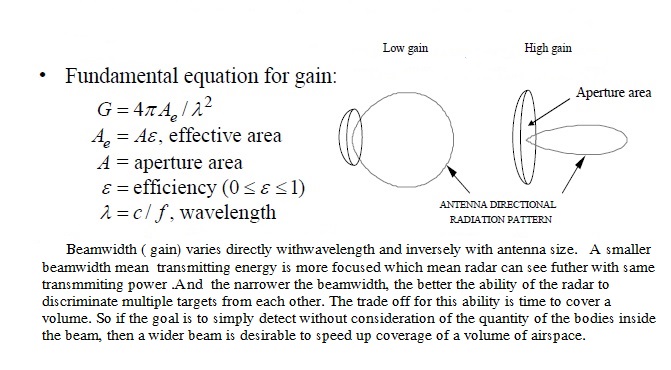It's exactly the same. The Chinese skip a step in between because they use only optical frequency.
@Radio : like everyone said, you need to understand what they wrote instead of just quoting without understanding anything at all. It clearly said in the article about quantum satellite that the pair of entangled particles are keep seperate aso that the user know what form of coding they would use, that is very different from the way it work in your theriotical quantum radar.
Yes, it's easy. Do you know how entanglement happens?
.
Iam sure he know what it is about from the way he wrote, but if you still dont know, normally we fired a laser at crystal to make pair of entanglement photons
Even after a photon has undergone decoherence, it still contains a lot of information. Quantum illumination is used to take care of decoherence.
decoherence often happens in noisy environment that why the radar will need it. But even with quantum illumination, you still lose significant advantage of quantum system if the entanglement break. (Btw no need to copy paste from Wikipedia here, iam sure everyone here understand what u talking about, this is rather simple part in quantum physics.)
The satellite uses both. Or the system won't work.e.
No it didn't need to, nor is there any evidence that quantum illumination was used, after all they only need very few pair of entanglement particles to transfer simple infor like what code they would use
Heres a thesis on how they use quantum illumination in communication.
If you actually read ( and understand) what you posted then you will see that the system in that thesis doesn't work in the same principle as the Chinese satellites, the Chinese satellite is alot more simple
In fact without quantum illumination you can't have a quantum-anything..
No offense but that is absolutely BS
Quantum teleportation is a safety feature. The photons change state if it is intercepted and immediately lets the satellite or ground crew know.
Radio, there is nothing actually being teleported here as clearly stated in the article, and it is not a safety features, it is a simple part of entanglement physics, the spin of the photon will be fixed when it is being measures, and the entanglement state will always be opposite of its entanglement pair, that why they will know when it being intercepted
So all major principles are used. Entanglement, illumination and teleportation. The physics is exactly the same for the radar also.
No and no, i dont want to be rude but your basis understanding of quantum physics is truly terrible.
There is not thing actually teleported in a quantum system, they only use that words because you always instantly know the state of a photon by measuring the state of its entangled pair regardless how far they are ( in fact this is even explained im your article but you just didn't read them)
100GHz, 900mm aperture, calculate resolution and beamwidth.
500THz, 1500mm aperture, calculate resolution and beamwidth..
That are pretty simple, range resolution will be decided by pulse width
angular resolution can be determined by this equation
So you're saying we can't see the moon, the sun, the stars etc because visible light which uses extremely high frequencies travels through earth's atmosphere and is attenuated? I didn't know that.
The power ( and the amount of photons comming from them) of the sun and the star are enormous compared to your radar
. Moreover if you pay attention you cant see them at all before the rain or through cloud, in morning most of the time you cant see stars and moon because it is too bright everywhere ( similar as effect of clutter on radar)
No, you don't need billions. Because unlike light bulbs, we can actually aim at our target using beamsteering.
beam steering and beam forming doesn't solve beam width problem of radar.
Okay, so the photons emitted from satellites are not attenuated then?
they do but
1) the quantum satellite only need a few photons to come through, because they don't transmit major information by these photons, they merely use the photons as a ways to let the base know what coding they will use for their communication transmission, aka very basic information
2) the satellite only need to successfully send the entanglement photons once and it is literally a straight line from ground to the satellite, so they can easily choose the suitable clear weather, spot to transmit those photons, after that these photons can be keep and observed to determine what coding will be used, It is also important to note that the radar with its wave near parallel to earth surface will so faced alot more problems with cloud cover and similar stuff compared to satellite firing it's laser perpendicular to the earth surface ( similar reason why the sun is brightest at noon but isn't very bright in sun rise and sun set)
And physics for quantum radar is different from a quantum satellite?
just because they both have the words quantum and entanglement doesn't mean their basis working principles is the same, there are alot more to quantum machine
"I didn't know the atmosphere is racist towards quantum radars. So the Chinese satellite goes through the same atmosphere and needs only a few photons, but a quantum radar that works at lower frequencies need more, billions in fact?
I already explained this before but as a bonus points
1) the satellite doesn't need reflection and it only need a few pair of entanglement photons to transmit coding information
2)laser light are very very directional compared to low frequency electronic transmitter










 that not how it work
that not how it work random radio , you need to stop making things up to support your point
random radio , you need to stop making things up to support your point
